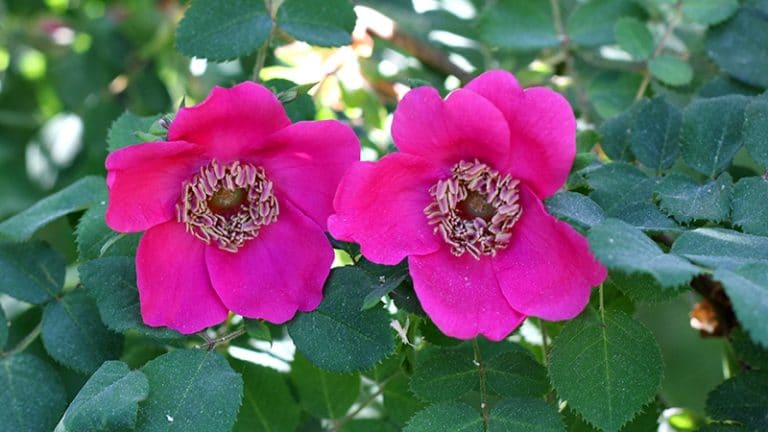
With frost upon us, the roses are getting ready for a long winter sleep. But don’t be fooled — their process of acclimatizing to winter dormancy is slow and gradual.
Dormancy is the most crucial element of winter hardiness, and roses require six to eight weeks of acclimatization before they enter full dormancy, ready to withstand the lowest winter temperatures. It’s not unusual to see some roses, such as ‘The Fairy’, blooming into mid-November, illustrating just how long a rose continues to function despite increasing cold.
The greatest danger period for roses is in the first two or three weeks of December, when some may not have completed the dormancy process. Although early December can be mild, it’s not unusual to experience a sharp temperature drop, significantly below freezing, and lasting for three to five days. This is disastrous timing for roses not yet fully dormant. With lingering moisture still in their tissues, they’re vulnerable to severe dieback of canes. When normally cold-hardy roses show lots of dead wood in spring, it’s often the result of frost damage in the early weeks of December, when they were still not fully dormant.
There’s not a lot we can do to prevent this circumstance. If early December gives us a sudden week of deep frost, then returns to milder temperatures, we can expect some damage in spring. But there are small steps we can take now to help keep a rose shrub healthy through whatever winter has in store.
It’s best to wait until spring to cut back rose canes. Pruning in spring means any twig dieback will be minimal. If canes and twigs are shortened in autumn, deep frost will cause tip and cane dieback, and we’ll be left with an even smaller shrub in spring. Long, thin canes of tall shrubs and climbers can be staked and tied before the ground freezes to keep them from whipping around in wind.
Like all shrubs and trees, roses require moisture in their soil during winter. Providing a good soaking before the ground freezes will see them through until the snow melts in spring. Spraying rose canes with an anti-desiccant product helps to prevent excessive moisture evaporation and sun scald on the canes.
Roses growing on their own roots may not require any further protection, but many of our garden roses are grafted plants. That means we’re dealing with the winter protection of two plants — the above-ground canes and the hardy root stock they’re grafted onto. The union of the two plants at the shrub’s crown is vulnerable, and should be carefully protected. The easiest and best method in our cold climate is to set the rose crown two to four inches (5 to 10 cm) below soil level on planting day. Some exceptionally frost-hardy roses, such as the Canadian Explorer and Parkland collections, are able to survive winter with no further consideration. But other shrub and climbing roses will benefit from the traditional hilling of soil around the crown to provide additional frost protection.
It’s best to wait until just before the soil freezes hard to hill roses. This late hilling allows the rose to feel the full impact of lowering soil and air temperatures, and hopefully encourages dormancy to proceed. I dump the soilless mix used in my containers over each rose crown, then follow up with a nice big pile of leaves over that. Alternatively, gather soil from another part of the garden and use that for hilling (don’t take it from over the rose roots), or buy a bag of potting soil to dump over each rose plant.
However you decide to hill the roses (and even if you don’t hill them at all), give the plants lots of leaves around and over the crowns. Leaves are wonderful insulation, and will make a nutritious mulch when you pull them back in spring and spread them out over the root zone. Lay dead twigs and slim branches from trees and shrubs (low branches from conifers are good for this) over the leaves to keep them in place, and then it’s sleepy time for roses.


Leave a Reply